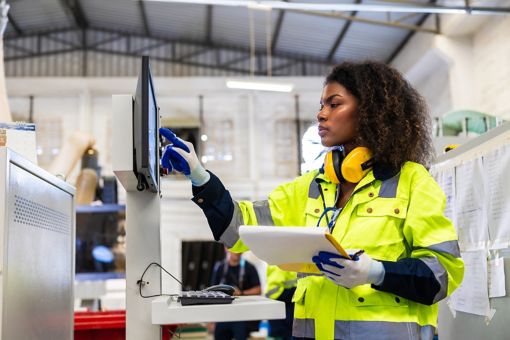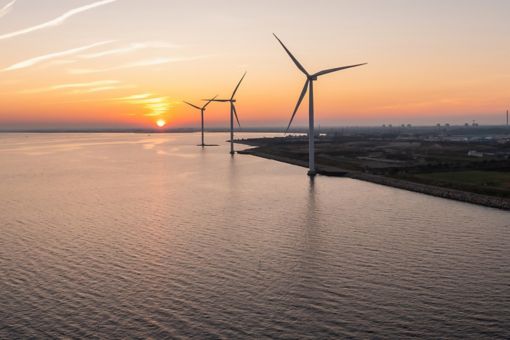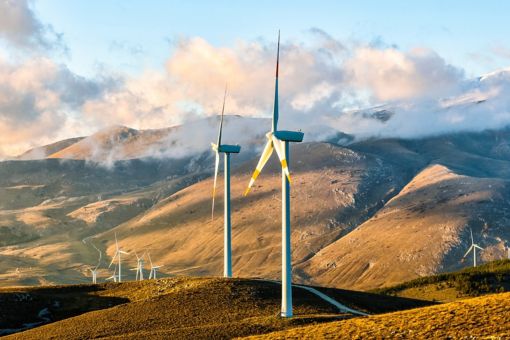Ben Wilson is Chief Strategy and Regulation Officer of National Grid Group plc, one of the largest network utilities in the world, based in London and operating in the UK and the US.
The company primarily operates electricity grids, although it also has investments in gas networks, solar, and onshore and offshore wind. This article is an edited version of Wilson‘s contributions to ‘Turning the tide in scaling renewables’, a panel session run by KPMG International at COP28 in Dubai to launch a research report of the same name. The full discussion is available to watch on demand.
In this edited reprint of his contributions, Wilson delves into critical questions driving the renewable energy dialogue. From the feasibility of COP28‘s ambitious goal to triple renewable energy production by 2030, to the evolving landscape of grid ownership and operation, he addresses key challenges and opportunities shaping the transition towards a sustainable energy future.

Plugged In
Harnessing technology to power the future
Download magazine (2.35 MB) ⤓
Download exec summary (360 KB) ⤓
Do you think the COP28 ambition to triple renewable energy production by 2030 is realistic?
Wilson: From a UK and US perspective, when we talk about the energy transition, we talk about the need to decarbonize, but we assume that that is going to cost money and because renewables are intermittent it will also have an impact on security and reliability. We talk about a trilemma and the need to balance those three things.
In Europe, a silver lining of the very dark cloud which is Putin‘s illegal invasion of Ukraine and his weaponization of gas is that we don‘t have a trilemma anymore. Renewables now are the cheapest source of power generation, much cheaper than gas-fired generation. The UK is a net importer of gas and every megawatt hour of renewable generation at the margin displaces imported gas. So, renewables now are cheaper and they are domestic and so they make us safer.
Second, renewables in themselves are not sufficient for us to get off fossil fuels. We also need grids to transport this renewable energy from where it’s generated to where it’s needed. There are studies which say that for every dollar we need to spend on renewables by mid-century, we need to spend somewhere between 50 cents and a dollar on grids. We also need storage of different durations and in particular long duration, how we are going to decarbonize transport and heat and what needs to happen on the customer side for us to do that.
Do we need to think differently about how grids are owned and operated?
Wilson: We are going through a paradigm shift in how we need to think about networks. The questions for network regulation over the last 25 years have generally been how do you stop the grid company gold-plating, over-forecasting the need for reinforcement, asset replacement and overbuilding. Network regulation is all about holding us back, don‘t spend anything more than you need to spend, don‘t do anything before you need it and if you do something different, we‘ll come down on you. That is not the world that we are in anymore.
In most places, the grid cost is a minority share of the total bill, around 20 or 30 percent. But it is foundational to everybody, everything else. The risk now is that we under-build, not over-build.
What issues do you see with supply chains?
Wilson: We have been through a very significant shock with global inflation and interest rates. The offshore wind OEMs [manufacturers] feel that they have been in a cycle of constantly having to upsize turbines and blade sizes before they have nailed the manufacturing quality at certain sizes. I put all of that in the category of growing pains and I do think it will sort itself out.
There is also the scale of transition and the requirement for new capacity to be created in the supply chain, a very good example of that being high voltage DC grid infrastructure. Interconnectors are going to be very important if you‘ve got offshore transmission, either as interconnectors or to connect offshore wind farms. The supply chain for that is very concentrated with three major manufacturers of converter stations globally and not many more manufacturers of DC cable. They are fully booked for the next 10 years, so the only way to get their attention is to be able to commit to 10 to 15 years’ worth of orders so that they can then establish new manufacturing capability. We must help the supply chain build additional capacity, which means that long-term certainty and that is pretty hard for grids because generally regulators give us three years, five years of certainty at a time.
What is your perspective on how long it takes to obtain permits to build projects?
Wilson: It is the critical path issue in terms of building out transmission. In the UK, in the next seven years we need to build five times as much transmission as we have built in the last 30 years. This is in a country with a high population density and a lot of people who don‘t want stuff in their backyard. We have been advocating for a bunch of changes, we are very pleased that the UK government and the regulator are absolutely aligned on this, and we are starting to see that change come through.
The first thing is a link between strategic planning of the system, establishing a needs case in planning law. If you live somewhere and you become aware that somebody wants to build a transmission line through where you live, the first question you have is, why here, why me? Why can‘t it be 50 miles down the road? A strategic plan has democratic legitimacy, has been consulted on and involves a public process which says we do need to build transmission in this area.
In decarbonizing energy, we don‘t want to harm the natural environment biodiversity any more than can absolutely be avoided. In the UK, we have the concept of biodiversity net gain, so we look for a 10 percent net gain in our projects. Finally, there should be investment in communities that are hosting critical infrastructure. Sometimes it is straight compensation, better though is to invest in community infrastructure into jobs.
The UK is talking about halving the time for permitting. Now it takes us 10 years to build a new transmission line, seven years of which is permitting, and then three years to build it.
What other issues affect the ability of electricity grids to decarbonize?
Wilson: One is the importance of prioritizing connections and the order in which we allow projects to connect. The UK at the moment has a system with peak demand of 50 gigawatts. We have now more than 400 gigawatts in the connection queue wanting to connect. We don‘t need 400 gigawatts to hit net zero in the UK, not all those projects are going to happen. It‘s a nice problem to have, but there does need to be some prioritization of that connection queue.
Second is the importance of digitally enabled grids that can support distributed demand and distributed generation. If we get this transition right with electrification of transport, we will have enormous, distributed batteries that can shave peak [demand] with the electrification of heat. There are massive efficiency gains in primary energy demands. So, if we get this right, it can be two or three times easier if we do it in a smart way than in a dumb heavy metal kind of way.
The views and opinions expressed herein on this page are those of the interviewee and do not necessarily represent the views and opinions of KPMG International Limited or any KPMG member firm.
Continue reading Plugged In Magazine 3
Explore
Connect with us
- Find office locations kpmg.findOfficeLocations
- kpmg.emailUs
- Social media @ KPMG kpmg.socialMedia







